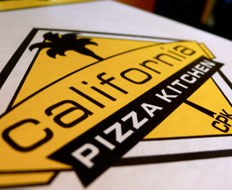Brand licensing can be many things to many people. Consumers, marketers, food manufacturers, brands, celebrity chefs, and retailers are increasingly embracing licensed products in their homes, businesses, and marketing plans and on their store shelves. One category that may reap the biggest benefit from intelligent brand licensing in 2012 and beyond will be the food and beverage industry, and more specifically, restaurant brands.
With so much cost and risk associated with national expansion for regional restaurant chains and a significant need for food manufacturers and grocery stores to differentiate themselves among consumers, licensing has become an increasingly popular, cost-effective way for restaurants to introduce a brand to market, ahead of brick-and-mortar expansion. From Jamba Juice to Macaroni Grill and P.F. Chang’s, the restaurant industry is beginning to recognize licensing as a way to successfully dip their proverbial toes in the water in order to introduce their brands to new markets and seed physical expansion.
With very little up-front costs (especially when compared to brick-and-mortar expansion), regional quick-service, casual, and fine-dining restaurants are finding that the way to make it into consumers’ homes, outside of the doggy bag, is through product licensing. For regional brands considering geographic expansion, the low- cost introduction to the market is a priceless touch point with consumers.
This has proven to be a successful pre-expansion initiative for several regional brands, such as Cinnabon and California Pizza Kitchen.
California Pizza Kitchen, originally a southern California restaurant chain, hit a licensing home run by licensing its pizzas in 1999 through a partnership with Kraft, which at the time was reported as holding 37 percent of the $2 billion frozen pizza market. As a result, the company was able to fuel its brick-and-mortar expansion across the U.S., and added so much value to Kraft’s frozen pizza business that Nestle purchased it in 2010, increasing its market share in the frozen pizza market to 50 percent. Today, the chain has more than 230 locations, as well as 20 SKUs of signature thin-crust and original pizzas at grocery.
With pizza already a freezer food favorite, California Pizza Kitchen capitalized on a product range already in demand, making licensing a cornerstone in the company’s strategy. California Pizza Kitchen’s presence in grocery stores across the country enabled the brand to sustain slow, steady growth by ensuring new restaurants were opened in marketable locations. When it came time to cut the red tape on a new dining location, brand awareness had already been established.
Chock full o’Nuts took a different route, letting its in-store offering drive sales while deciding not to expand its physical footprint. Starting as a small nuts cart in New York City, and soon after opening a handful of coffee shops, Chock full o’Nuts brought its branded coffee to grocery in 1953. Today, Chock full o’Nuts isn’t known for being in the pantheon of coffee chain conglomerates such as Starbucks and Dunkin’ Donuts, but its quality reigns supreme, nestled triumphantly between Folgers and Maxwell House on grocery store shelves. While expansion may not have been a strategic initiative for the chain, this is a strong proof point that brand licensing, when executed intelligently, can also be a primary source of revenue.
Like Chock full o’Nuts, Marie Callender’s, the once popular American restaurant chain famed for its pies and desserts, is an example of a restaurant whose licensing program exceeded revenue generated by its brick-and-mortar presence. In fact, in 2011, it was reported that Marie Callender’s frozen food business, which includes pot pies, desserts, and various dinners, was estimated to have grown to $800 million annually, a testament to the brand’s strength as a license and why it was purchased by ConAgra.
But product licensing is not as simple as taking the names from the menu and sticking them on a pack of frozen vegetables. Consumers are looking to re-create the experience they had when dining in the restaurant. After preparing their meal at home, they want to feel as though the chefs from the restaurant could have prepared what they’re eating.
P.F. Chang’s has done well to expand its offering of consumer favorites. Taking the toe-in-the-water approach, it first introduced a line of rice dishes to grocery consumers and, later, after experiencing success, brought a line of noodle dishes to market. Now, through its partnership with Unilever, the business is expected to grow to more than $100 million this year, a remarkable feat considering the program launched about two years ago.
P.F. Chang’s also wisely designed a platform to connect consumers with its grocery offering by allowing them to locate which products are available at their local groceries through its home menu website. Now consumers who have experienced the food in the restaurant but do not live near its locations can locate a nearby grocery that offers P.F. Chang’s frozen dishes.
While licensing is an evolving business practice among restaurant chains, it’s still experiencing its fair share of growing pains. Many restaurant brands that have a strong franchisee base are still reluctant to consent to licensing. There is a school of thought that licensed products will detract from foot traffic in restaurants. However, products sold in the supermarket will not replace the experience of dining out; it’s a different usage occasion. For consumers, the decision to dine out is driven by a number of factors, including the experience and convenience. The products at grocery, however, are an alternative that allows consumers to capture part of that experience from home.
Brand-affectionate customers, eager to experience and interact with their favorite restaurants, are the reason why the grocery isle has grown to be known as restaurant row.












